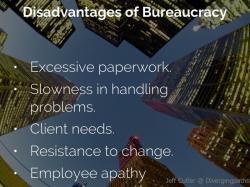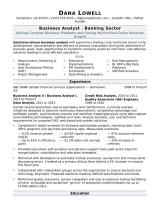How to manually calculate payroll?
Manually calculating payroll means working through each step of the process without relying on payroll software. You’ll need to carefully follow labor laws, tax rules, and any company policies. Here’s how to do it step-by-step:
1. Gather Employee Information
Work hours: Timecards, sign-in sheets, or schedules.
Pay rate: Hourly wage or salary.
Overtime rate: Usually 1.5× hourly wage for hours over 40/week (U.S. federal standard).
Deductions: Taxes, benefits, retirement contributions, garnishments.
2. Calculate Gross Pay
Hourly employees:
Salaried employees:
3. Calculate Pre-Tax Deductions (if applicable)
Examples:
Health insurance premiums
401(k) contributions
Other pre-tax benefit plans
4. Determine Tax Withholding
Federal income tax: Use IRS Publication 15 (Tax Tables) based on filing status and allowances.
State/local taxes: Follow your state’s tax rates and tables.
Social Security tax: 6.2% of wages (up to annual wage limit).
Medicare tax: 1.45% of wages (+0.9% for high earners).
5. Subtract Post-Tax Deductions (if applicable)
Examples:
Union dues
Wage garnishments
After-tax retirement contributions
6. Calculate Net Pay
7. Record & Distribute Pay
Document calculations for compliance.
Issue paycheck or direct deposit.
Provide pay stub with breakdown.
Example — Hourly Employee:
42 hours worked, $20/hour, no pre-tax deductions, single filing status.
Gross Pay:
Regular:
Overtime:
Total: $860
Taxes (example only):
Fed income tax: $60
Social Security:
Medicare:
Total taxes: $125.79
Net Pay:
Calculating payroll manually can seem daunting, but it's a manageable process when you break it down into a few key steps. Understanding the components and having a system in place can help you ensure accuracy and compliance.
How to Manually Calculate Payroll Step-by-Step?
Here's a step-by-step guide to calculating payroll manually:
Calculate Gross Pay: First, determine the total earnings before any deductions. For hourly employees, multiply the hours worked by their hourly rate, including any overtime pay. For salaried employees, divide their annual salary by the number of pay periods in a year.
Subtract Pre-Tax Deductions: Next, subtract any pre-tax deductions like contributions to a 401(k) or health savings account (HSA). These reduce the amount of income that is subject to tax.
Calculate and Withhold Taxes: Use the employee's W-4 form and federal tax tables (like those in IRS Publication 15-T) to calculate federal income tax withholding. Then, calculate FICA taxes: Social Security (6.2% of wages up to the annual wage base) and Medicare (1.45% of all wages, plus an additional 0.9% for high-income earners). Don't forget state and local taxes, which vary by location.
Subtract Post-Tax Deductions: Finally, deduct any post-tax items, such as Roth 401(k) contributions, wage garnishments, or union dues.
Determine Net Pay: The remaining amount is the employee's net pay, which is the amount they'll receive.
What Are the Key Components of Payroll Calculation?
The main components you'll work with are:
Gross Pay: The total amount an employee earns before any deductions.
Pre-Tax Deductions: These are taken out before taxes are calculated and include things like health insurance premiums and 401(k) contributions.
Taxes: This includes federal income tax, FICA taxes (Social Security and Medicare), and any applicable state and local taxes.
Post-Tax Deductions: These are subtracted after taxes have been calculated and can include items like Roth 401(k) contributions or wage garnishments.
Net Pay: The final take-home amount for the employee.
How to Deduct Taxes and Benefits from Gross Pay?
Deducting taxes and benefits is a critical part of the process.
For Taxes: You must refer to the employee's W-4 form and the relevant tax tables from the IRS (Publication 15-T) and your state's tax authority. These tables provide a structured way to determine the correct withholding amount based on the employee's filing status and income.
For Benefits: Deductions for benefits like health insurance or retirement plans are often a fixed dollar amount or a percentage of gross pay. You'll need to know whether the deduction is pre-tax (taken out before taxes are calculated) or post-tax (taken out after).
What Tools Can Help with Manual Payroll Calculation?
Even for manual calculations, you don't have to rely solely on a pen and paper.
Payroll Worksheets: Creating a detailed spreadsheet in a program like Excel or Google Sheets can help you organize all the necessary information, from gross pay to deductions. You can use formulas to automate some of the calculations, reducing the chance of error.
Online Payroll Calculators: Many websites offer free payroll calculators that can help you verify your calculations for federal, state, and local taxes.
Tax Tables and Forms: Always have up-to-date tax tables and blank forms like the W-4 and I-9 on hand.
How to Avoid Common Payroll Calculation Errors?
Accuracy is key to avoiding penalties and employee dissatisfaction.
Double-Check Your Work: The most effective way to prevent errors is to carefully review all your calculations before finalizing payroll.
Stay Up-to-Date on Tax Laws: Tax laws and rates can change. Make sure you are using the most current information from the IRS and your state's tax authority.
Use a Consistent System: A standardized payroll process and spreadsheet can help ensure you don't miss a step or a deduction.
Keep Good Records: Maintain clear and organized records of all payroll data, including hours worked, gross pay, and deductions. This is essential for both internal purposes and for audits.













